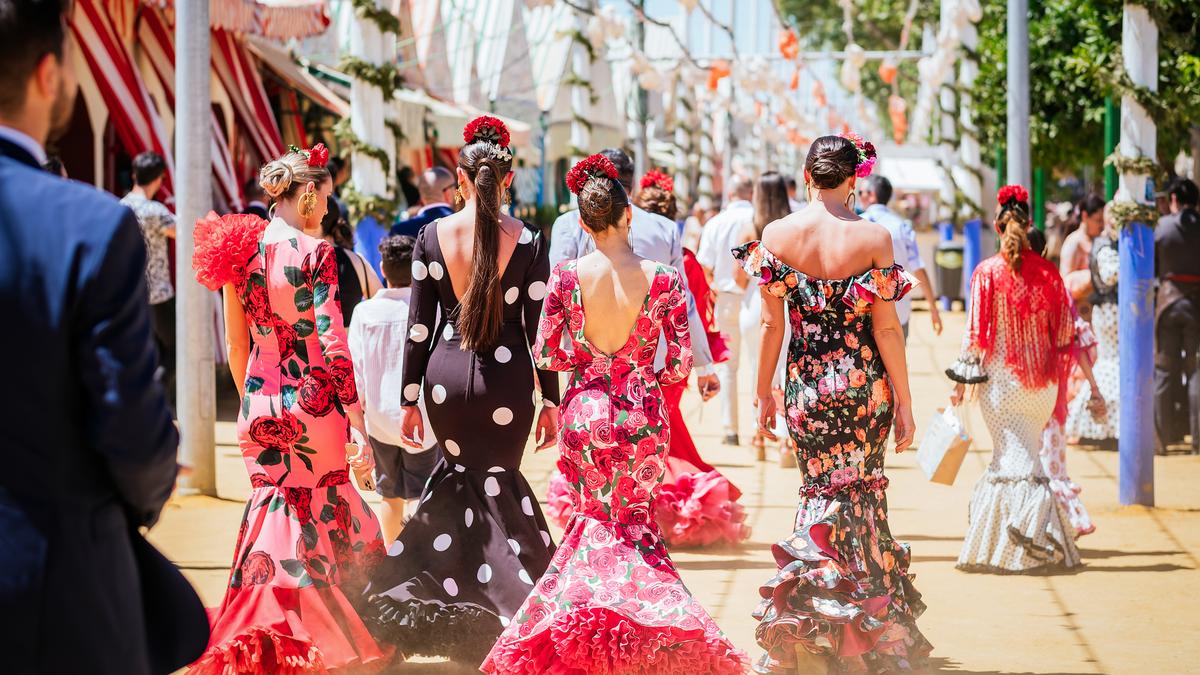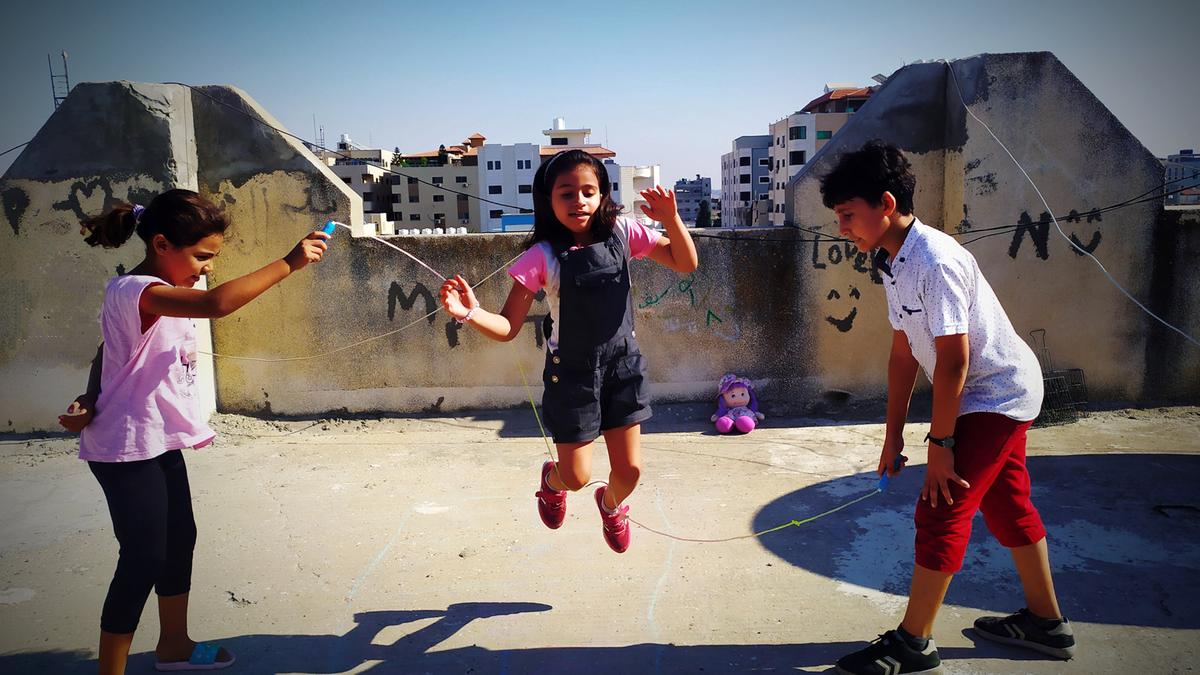Diana Mohapatra’s mixed media on paper, Touch my Breasts
When Adil Kalim, 28, visits the hospital for his diabetes treatment, he always brings along a sketchpad and inks. He spends the uncomfortable hours during dialysis making compact, layered artwork. Being diabetic is not the only challenge he faces; his life as a queer man living in a conservative Muslim community often leaves him feeling like an outsider. “I make peace through my creative expression. In many ways, it’s the only thing that gives me the strength to not give up on life,” says Kalim.
His is not the only story of struggle that finds expression in Vichitra Desh – Queer Nation, at the India Habitat Centre, Delhi. The 30-odd participating artists view their faith, their families and their queer politics through art. Presented by Engendered, in association with the University of California’s Feminist Studies Department, the exhibition and symposium features a mix of Indian and international artists, including T. Venkanna, Balbir Krishan, Alafiya Hasan, Matthew Richardson, and Avril Stormy Unger.
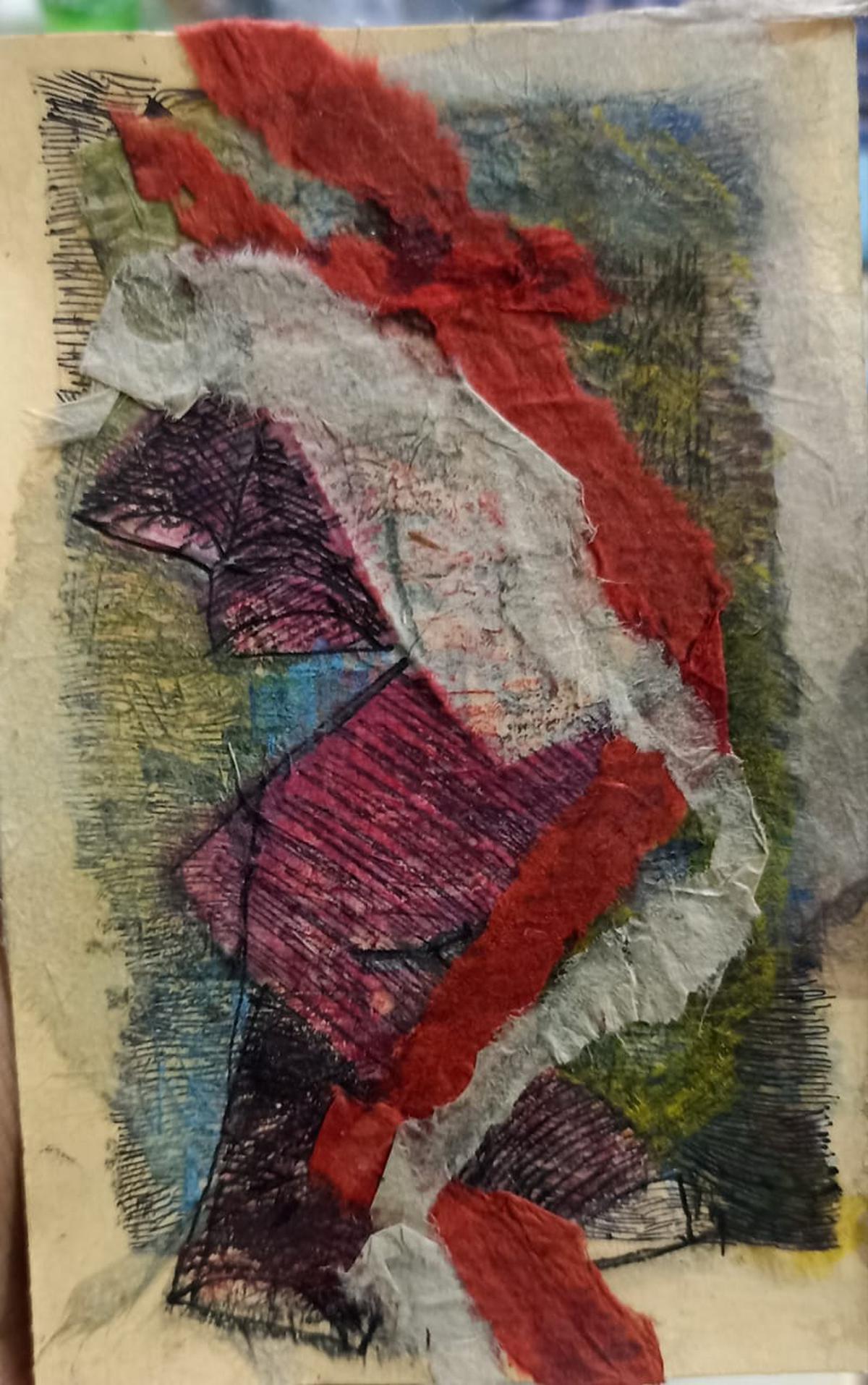
Adil Kalim’s untitled mixed media
Intersection of minorities
Vichitra Desh explores the act of queer love, desire, fantasy and mythology through a bricolage of visual and performance art, social science research, life stories, and activist ephemera. It is the first time that such a large body of work — paintings and sculptures to installations and performance pieces — is coming together around the issue of queerness in the capital. It features young artists alongside established names.
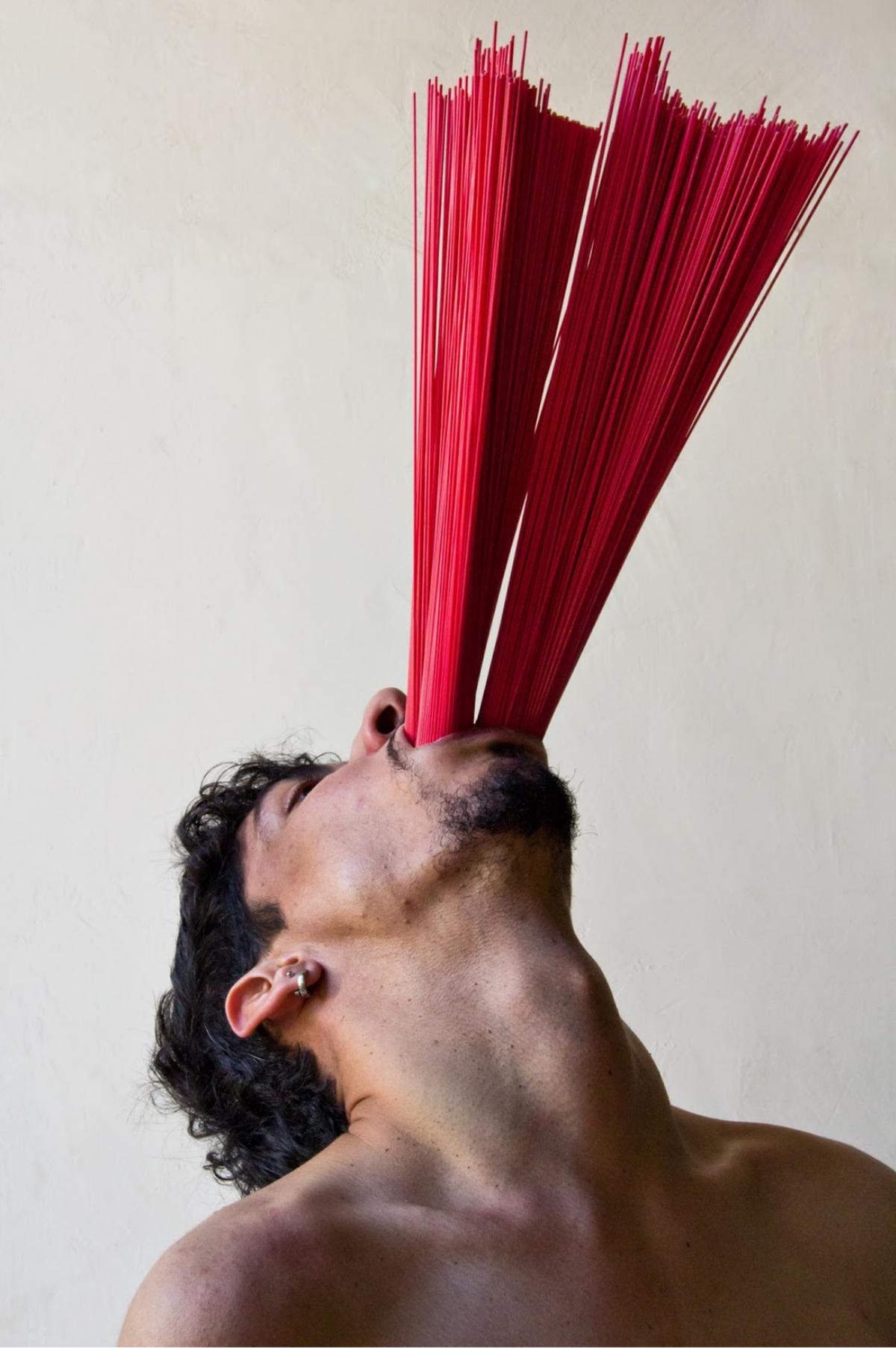
Raphael Couto’s Bouquet Red
“The wide array of artwork [and symposium] goes towards the purpose of addressing what queer art is, and that it is not limited to a particular kind of work,” says Myna Mukherjee, the head curator. “The point is to look at the liberation of terminologies. Queer has the potential of expanding its meaning from its normative pedagogical references and to re-contextualise it from a Global South point-of-view.”
An artist who embraces this is Diana Mohapatra, 38. “I negotiate the public and private realms, locating the body as a site of contestation and appropriation,” says the Delhi-based artist. While her previous work was directly figurative, she is now engaging in a more symbolic depiction of feminine desire. “My feminist aesthetics and progressive strategies move beyond the confinement of two-dimensionality into a multidisciplinary approach.”
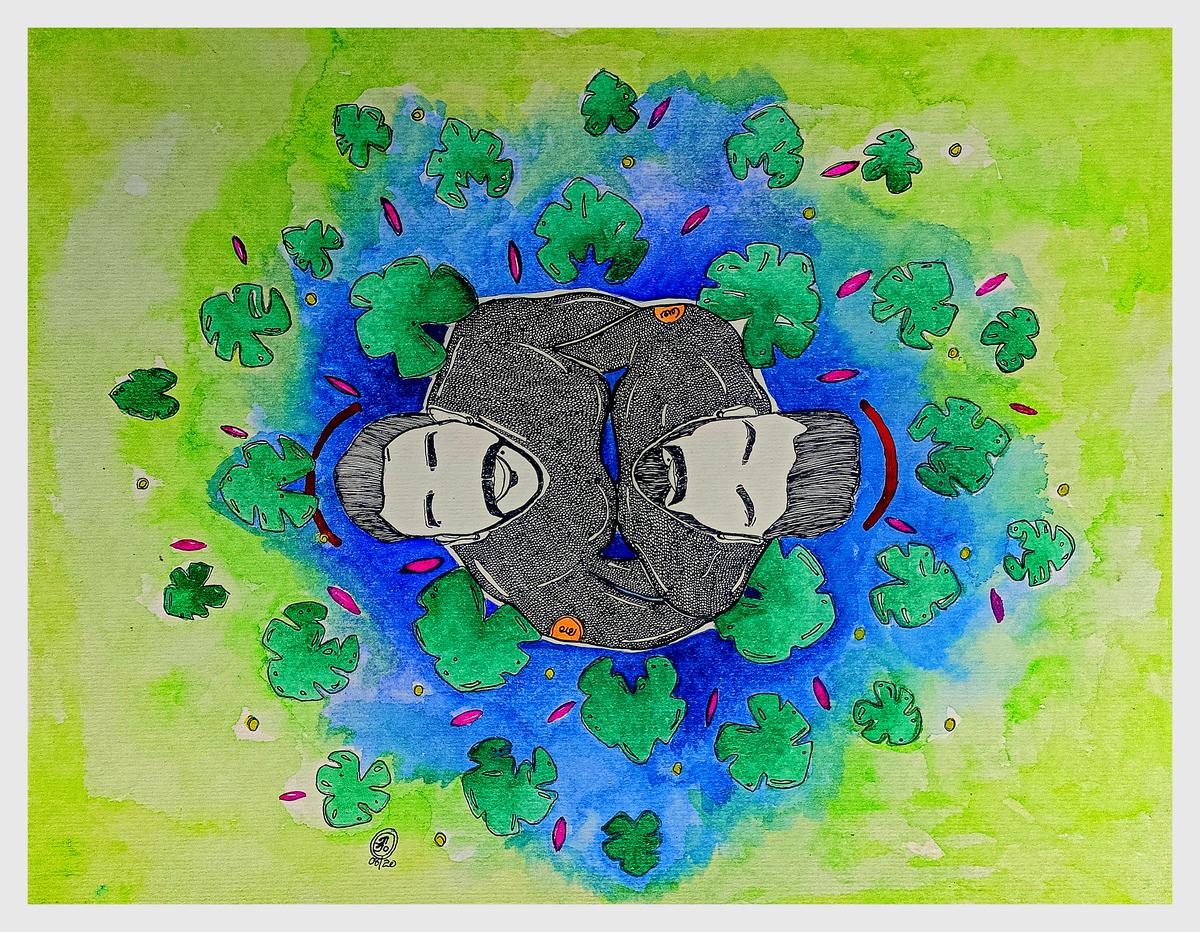
Art by Jijo Kuriakose
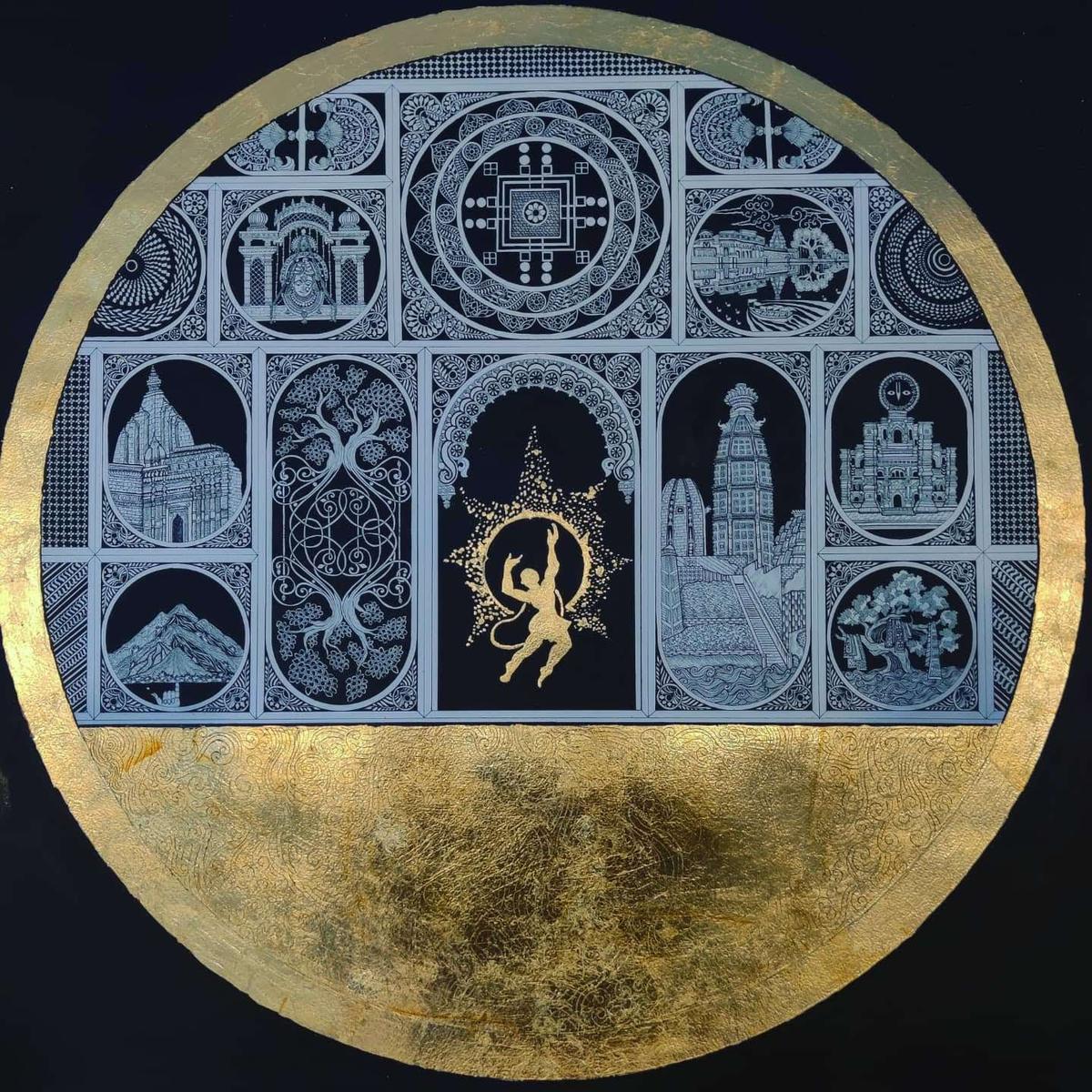
Artwork by Rajat Sharma
Another young artist to note is Alafiya Hasan, 23. An illustrator and game designer from Pune, she works at the intersection of art and interactive storytelling to create narratives that aim to represent some of our more ethereal longings. Her works at the exhibition speak of her personal position as a queer artist belonging to a minority community, and she talks about reclaiming the idea of that which is ‘undesirable’. For instance, one of her illustrations, Even Shaitaan Showers — which depicts a woman lying on a carpet while pigeons drink from of a puddle — was created as a cover for The Queer Muslim Project’s zine, Tributaries. It deals with making a home among the things, creatures and places that have been named ‘dirty or impure’.
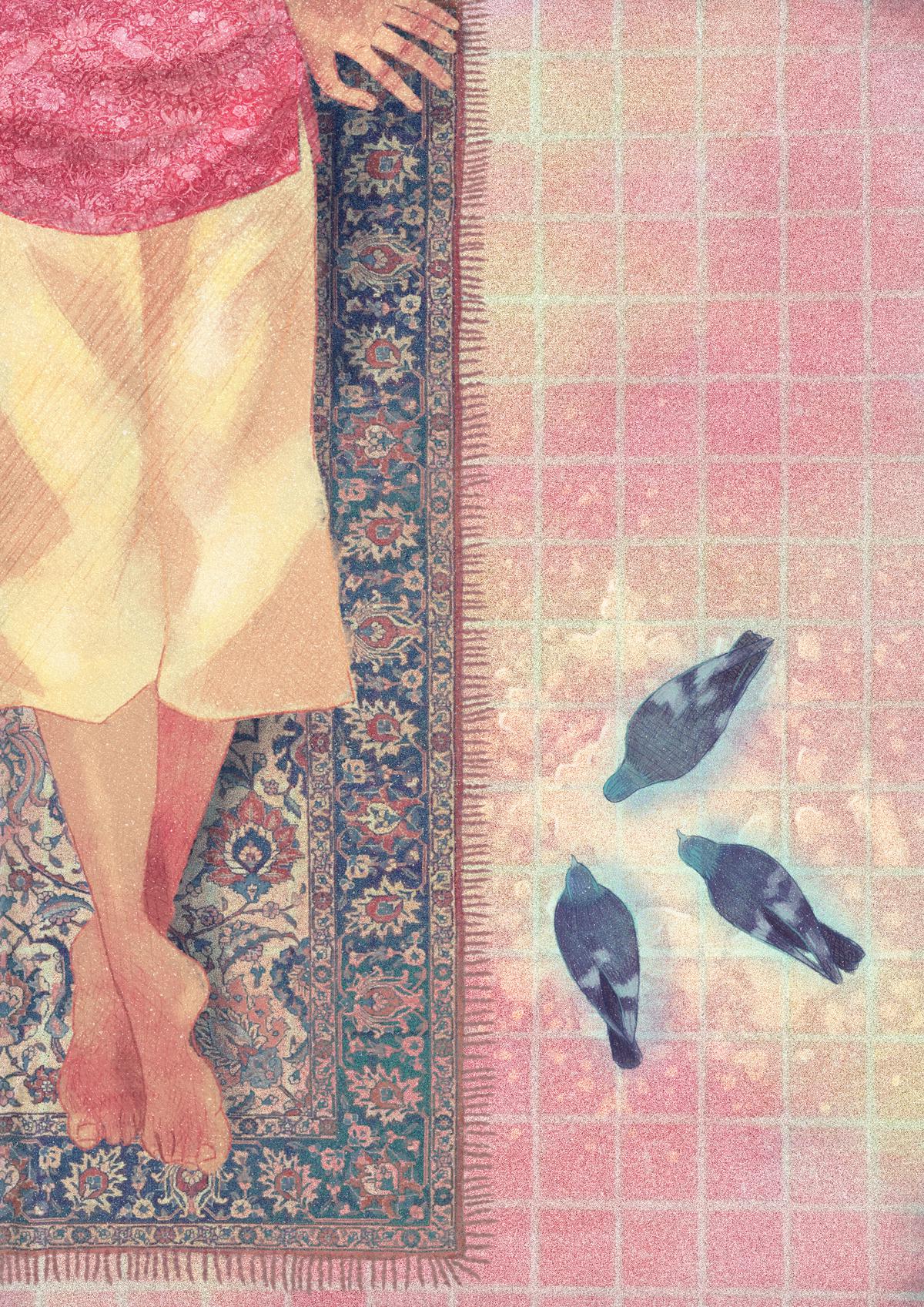
Alafiya Hasan’s Even Shaitaan Showers
Taboos and fantasy
Meanwhile, T. Venkanna, 43, an established name in the art world, has been examining social taboos built around sexuality. One of his latest works, Churning (2022) — featuring two women engaged in erotic pleasure yet praying to a ripe pomegranate tree — touches upon the current issue of same-sex couples looking for legal partnership rights. “The tree is symbolic of fertility in many cultures,” says Venkanna, adding that Churning “visually explicates same-sex couples’ desire to have children, while simultaneously serving as a powerful portrayal of gender that challenges conservative adoption laws in India”.
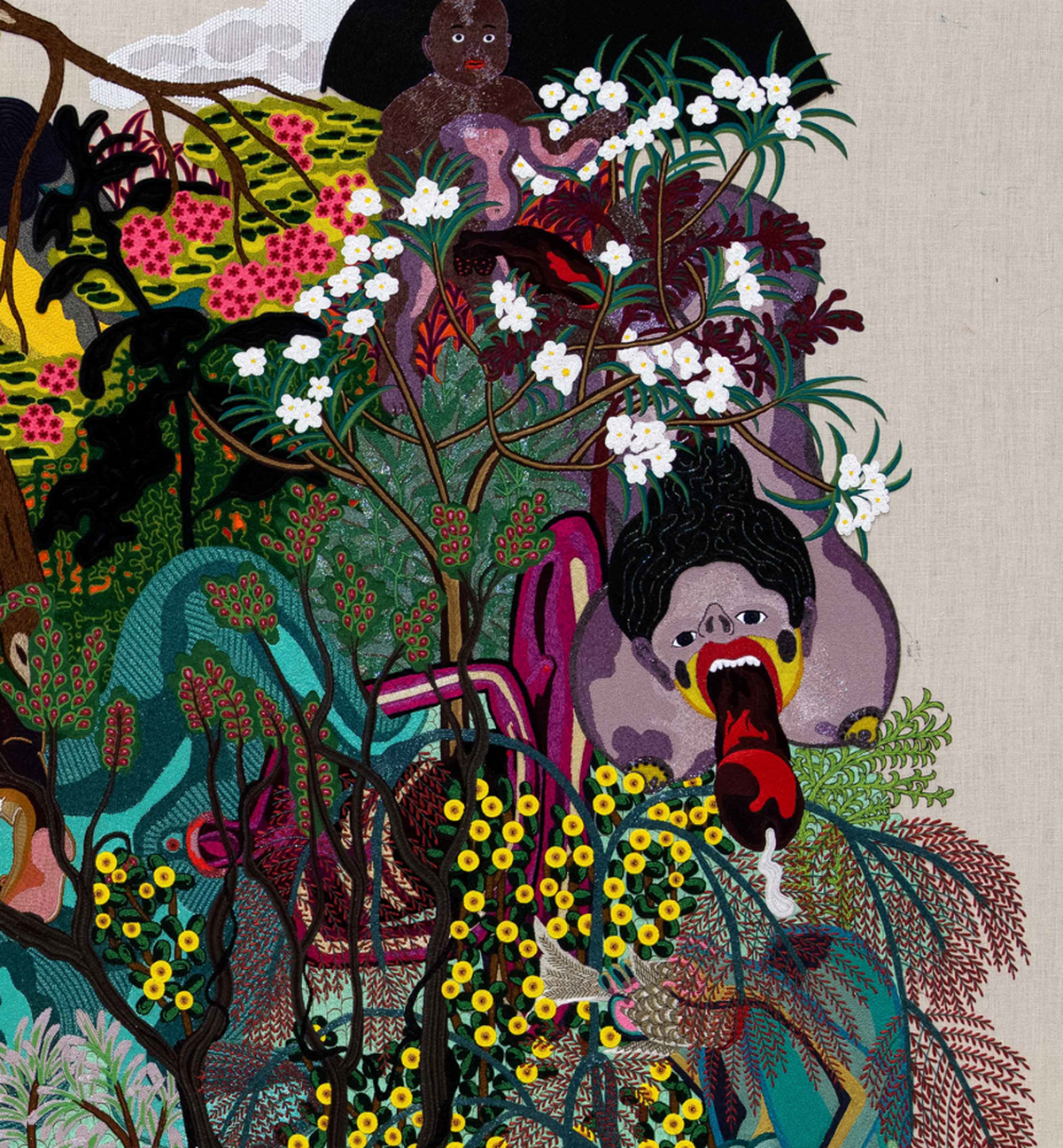
A portion of T. Venkanna’s Kismet (pencil and hand embroidery on linen)
On an aside, we ask some of the artists about the Supreme Court’s decision not to recognise same-sex marriages. Indranil Roy, a performance artist at Vichitra Desh, says, “It is very disappointing to have this judgment take away the hope of integrating into the mainstream, especially since the actual fabric of Indian history and mythology allows so much gender and desire fluidity. This was a chance to correct the weight of colonialism and Victorian morality.”
Khakhar in focus
The exhibition is also hosting a tribute to artist Bhupen Khakhar, one of India’s earliest artists to openly paint gay desire and sexuality. A self-taught artist who joined the Baroda Artists Group, Khakhar’s narrative style paintings speak of sexuality and mythology juxtaposed with the everyday existence of the middle-class Indian male. Besides featuring his etching — of a man with a lotus through his navel — guests can also see a tribute done by artist Subrat Kumar Behera. The work, executed in Bhupen’s style, portrays a winged portrait of the artist standing against a background featuring glimpses of his life and lovers.
Voices from abroad
Among the international artists, Richardson’s collages — assembled in both physical and digital media, using paper, cloth, clay and found images and objects — catch the eye. His art explores how meanings, messages and stories shift, mutate and fragment through the passing of time. Raphael Couto uses performance and photography to bring to the fore the element of fantasy, and the discomfort borne by queer folks.
The exhibition is on till November 5 at the India Habitat Centre, New Delhi.
The writer is a critic-curator by day, and a visual artist by night.


